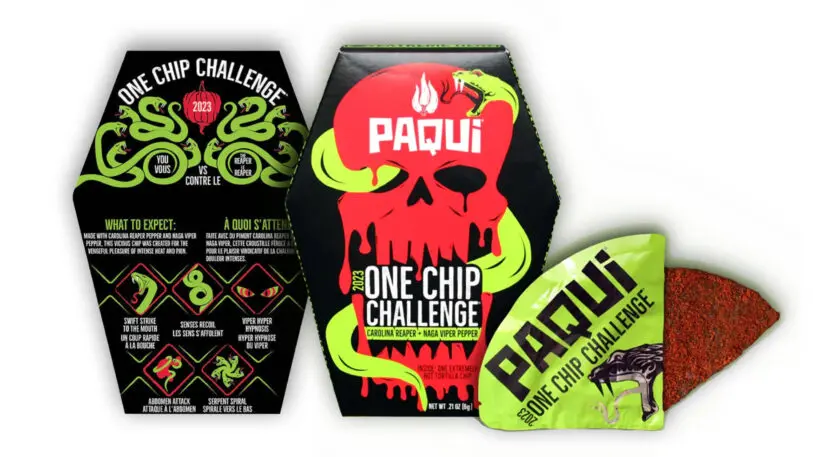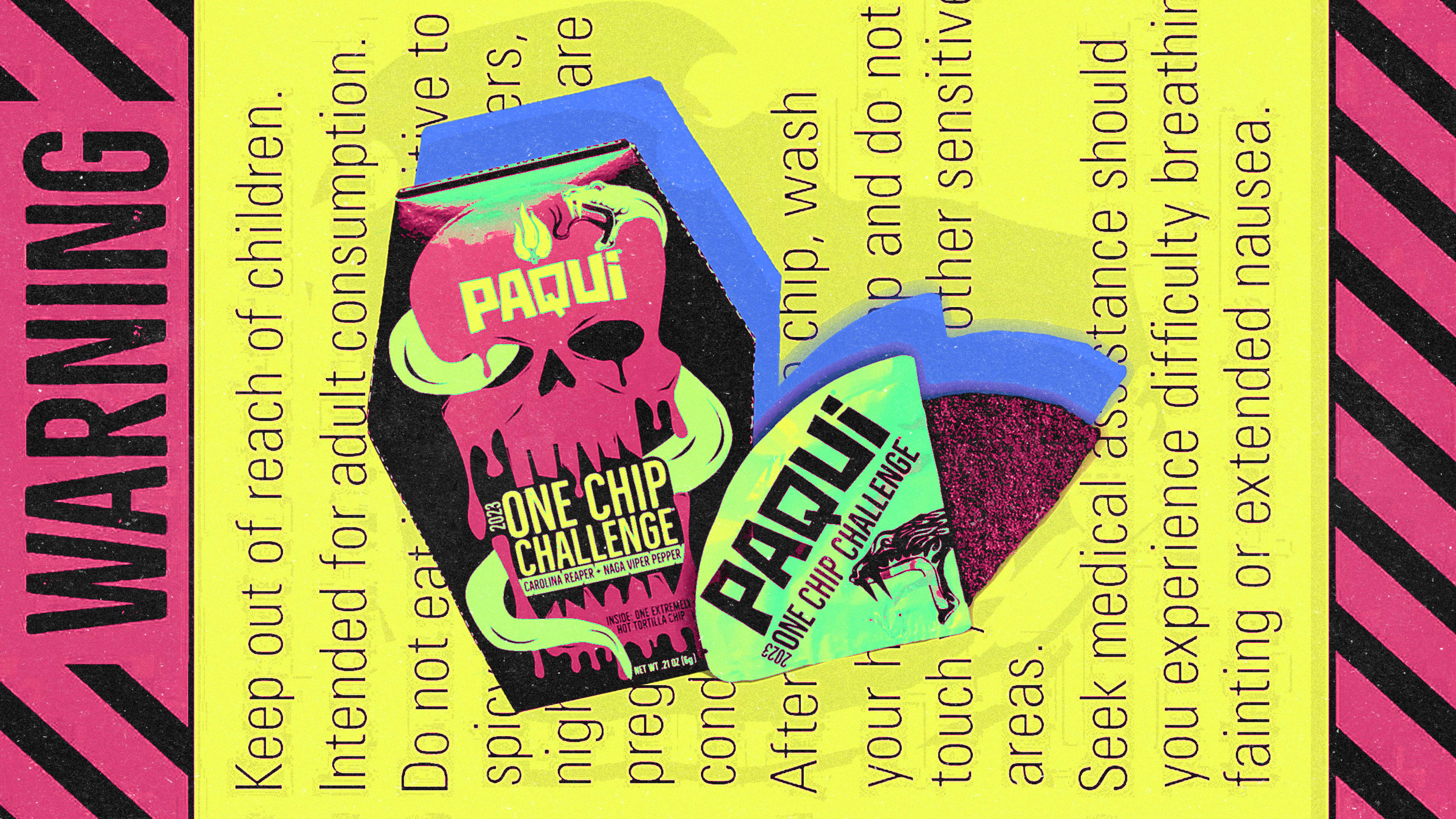Branded is a weekly column devoted to the intersection of marketing, business, design, and culture.
The Paqui chip brand, which places an emphasis on spiciness, spent years building a clever, irreverent, edgy, and apparently successful campaign promoting its snacks: a One Chip Challenge that dared consumers to eat a single mega-hot chip, sold in a coffin-shaped package. It seemed like all good, on-trend, and sales-boosting fun.
But recently, the brand’s narrative suddenly changed. The family of a 14-year-old in Worcester, Massachusetts, blamed Paqui for the boy’s death after he ate a Challenge chip, and Paqui (which is part of a Hershey subsidiary) has pulled the product from stores. Suddenly, the entire effort looks like a cautionary branding tale. And that’s particularly true because the exact same campaign details that made the strategy so effective are now what makes it look so dubious.
Pop culture “challenge” crazes are nothing new, dating back at least to phone-booth stuffing in the 1950s or the (appalling and unsafe) goldfish swallowing fad of the late 1930s. But challenge culture has gotten a boost from (surprise!) social media—and especially, in recent years, TikTok. The endless stream of TikTok challenges have become interwoven with the culture at large, with challenges that fueled mass phenomena from “Old Town Road” on down. Nothing has democratized herd behavior quite so effectively as TikTok.
But challenge culture has (per the goldfish thing) always had a dark side. In the TikTok era, that’s included challenges involving climbing milk-crate towers, or stealing Kia models, among other examples. Yes, in some cases, these fads were boosted more by media hype than reality—but that’s how fads work.
And for a certain kind of brand, the dark side is actually not a bug in the challenge culture idea, it’s a feature. Even as they become thoroughly mainstream, social media fads often feel vaguely underground: any given post can land like a secret message clueing you in to off-the-radar happenings that your parents (or bosses or whoever) don’t know about. It’s a mode that resonates because of its apparent authenticity—even, or especially, if that includes a note of risk or danger.
The One Chip Challenge, then, sounds like an overt attempt to convert the spirit of the TikTok challenge idea from a digital phenomenon into a physical commodity—the rough equivalent of opening an actual restaurant called Thai Food Near Me. And commoditizing TikTok fad-ness makes sense, given the platform’s increasing drift into commerce.
But the One Chip Challenge actually dates back to 2016, well before TikTok reigned supreme in the U.S., and tapped into a slightly different, but not wholly unrelated, pair of trends beyond social media. One is elevating spicy food consumption into the realm of physical test, perhaps best exemplified by the Hot Ones YouTube series, which involves celebrities eating wings so spicy that they visibly suffer; this is arguably a spinoff of stunt/prank entertainment dating back to the “extreme” culture marketing fads of the 1990s.

The second trend is, to be blunt, aesthetics signifying danger and even death: The One Chip Challenge coffin package featured images of a skull and a snake. This isn’t terribly unusual, particularly for hot sauce and other spicy foodstuffs, or meant to be taken seriously. Trendy products like Liquid Death use such imagery with playful irony, and popular holidays of Halloween and Dia de Los Muertos commingle symbols of death with raucous celebration. So when Paqui marketing declared its 2021 Chip Challenge offering “the deadliest spice combination yet that will humble even the toughest of participants,” everybody understood there was a wink involved.
In other words, Paqui’s branding was very on point—right up until the moment it turned deadly.
To be clear, the death of a 14-year-old is a tragedy that transcends anything we can say about marketing or business, and we don’t currently know all the details. But we do know that Paqui, in pulling the product, published a statement noting that the One Chip Challenge is “intended for adults only” and the packaging includes “prominent labeling” to that effect. “We have seen an increase in teens and other individuals not heeding these warnings,” the statement continues. So while it adheres to “food safety standards,” the brand is pulling it out of “an abundance of caution.” We also now know, perhaps belatedly, that there were prior incidents—like three high school students hospitalized after trying the One Chip Challenge last year. (“Our #OneChipChallenge includes a safety disclaimer,” the company replied in part at the time.)
The deeper problem for Paqui is that all the things it seemed to be doing right have become all the things it seemed to be doing wrong. The irreverent packaging seems callous. The authentic quest to make an outrageously hot chip—the most recent iteration involved the Carolina Reaper and the Naga Viper, reportedly “two of the hottest peppers in the world”—seems reckless. Causing people to physically suffer for entertainment seems sadistic. And crafting an image of risk with a wink that is bound to attract adolescent interest in an “adults only” product now seems not clever at all, but cynical.
And yet, none of that means that Paqui can’t recover. It’s possible, in fact, that the product’s reputation for potentially causing actual harm makes it more exciting to a certain kind of consumer. But it will have to figure out how to balance the edgy vibe it has so carefully honed with a convincing sense that, ultimately, it is behaving responsibly. And that could be a challenge.
Recognize your brand’s excellence by applying to this year’s Brands That Matter Awards before the early-rate deadline, May 3.
